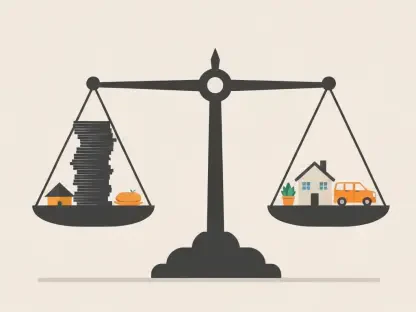In an industry long defined by gated networks and batch settlements, a major U.S. bank moving a dollar-pegged token across a public chain signaled a pivot from proof-of-concept talk to live-fire testing under real compliance controls, and the stakes stretched far beyond a single pilot. The trial centered on a bank-issued stablecoin deployed to the Stellar blockchain, a network lauded for fast finality and lean fees, but chosen here for something more pragmatic: issuer controls that mirror the knobs and dials banks expect inside regulated payments. The bank’s digital asset unit framed the effort as a payments-first experiment, yet the design hinted at a wider playbook—treasury, cross-border corridors, and programmable money services that constant settlement could unlock.
Why a bank-backed stablecoin chose a public chain
Controls, speed, and the Stellar calculus
From the outset, the platform question looked less like a referendum on decentralization and more like a search for operational certainty. Stellar’s pitch fit a bank’s comfort zone: 3–5 second settlement, consistently low transaction costs, and a track record of uptime that soothed executive risk committees. Yet what tipped the scales were native issuer tools—fine-grained controls, allowlists, and an explicit freeze function—that mapped neatly to obligations around sanctions, fraud, and error remediation. In other words, this was public infrastructure with enterprise guardrails. By anchoring a payment token in that environment, the bank could pursue on-chain speed without abandoning intervention rights, threading a needle that private ledgers had historically claimed as their exclusive advantage.
Moreover, the network’s design lent itself to remittance and FX-style routing, which mattered for a bank with global clients and correspondent ties. Settlement predictability and transparent fees offered a measurable upgrade over cross-border wires prone to delays and opaque intermediaries. A bank-issued token on Stellar could traverse public rails while remaining subject to bank-defined rules, with revocation and freeze levers that satisfied policy teams. That duality—open access coupled with issuer authority—reshaped the usual trade-off between public networks and compliance. The pilot therefore functioned as a risk-adjusted test of whether public throughput could be married to bank-grade governance, not a bet on speculative volume or retail hype.
Compliance-first design and operational guardrails
Risk officers did not start with throughput; they started with “stop.” The ability to halt movement, reclaim funds, or respond to a law enforcement order had to be natively supported, documented, and testable. Stellar’s asset issuer framework matched those needs, letting a bank encode rules at the token layer and enforce them consistently. That posture aligned with the U.S. policy backdrop: the GENIUS Act, signed in July, set out a pathway for payment stablecoins under supervised regimes, emphasizing reserves, liquidity, and revocation procedures. Against that policy baseline, the pilot’s architecture—issuance controls, reserve custody, and auditable state—met the spirit of “same risk, same rules,” while still exploiting the efficiency of public rails.
Institutional partners filled in the rest of the compliance stack. Anchorage Digital Bank provided issuance plumbing and reserve custody, linking token supply to segregated, attested collateral. The Stellar Development Foundation offered technical support and network stewardship, while a Big Four adviser, PwC, contributed assurance disciplines familiar to bank auditors. Together, this ecosystem reduced integration friction and shifted the debate from “can it be controlled” to “how should it be governed.” In parallel, messaging to corporate clients emphasized predictable settlement and reconciliation, not crypto novelty. It was the compliance-first posture—the ability to demonstrate restraint as much as speed—that made the experiment palatable in a regulated bank.
From pilot payments to broader on-chain finance
Cross-border throughput, treasury workflows, and settlement
Payments served as the initial use case because benefits were immediate: faster settlement, lower fees, and reduced reconciliation drift across time zones. For corporates managing multi-entity cash, a bank-issued token with intraday finality could streamline sweeps, improve liquidity visibility, and cut daylight overdraft risk. On the cross-border front, programmable flows promised fewer intermediaries and clearer fees, with the issuer’s controls maintaining KYC and sanctions compliance across endpoints. Here, Stellar’s pathfinding and built-in asset exchange mechanics offered credible routes for corridor buildout, while the bank’s role as issuer anchored trust in the value traveling over those routes.
As the bank validated operational readiness, the token became a base layer for additional services. Tokenized receivables, conditional payouts, and instant merchant settlement moved from slideware to plausible pilots, especially when combined with APIs that mapped seamlessly into existing treasury portals. Moreover, the controlled public network reduced vendor lock-in: fintech partners could integrate without bespoke pipes, and the bank retained issuer authority regardless of counterparty mix. The near-term result looked less like a new product line and more like a network upgrade to money itself—programmable, traceable, but still governed within the contours of bank supervision and audit.
Regulatory runway, partnerships, and what comes next
Clearer rules created the conditions for bold experimentation, and the GENIUS Act supplied a workable template for reserve quality, redemption, and disclosure. With policy questions narrowed, the frontier shifted to interoperability and supervision at scale. That is where partnerships mattered. Anchorage Digital Bank’s custody and issuance controls, combined with PwC’s assurance practices, offered verifiable discipline for regulators and clients alike. The Stellar Development Foundation’s engagement ensured that issuer features, incident response, and monitoring kept pace with institutional needs. Meanwhile, signals from other majors—Citi collaborating with Coinbase—suggested a center of gravity forming around regulated, bank-tethered tokens.
The next step was less about flipping a switch to mass deployment and more about widening the circle in controlled increments. Additional corridors could be launched, stress tests expanded, and redemption processes exercised under peak load to prove durability. Interop with other public chains via standardized attestations might follow, preserving issuer controls while extending reach. Finally, publishing transparent reserve attestations on-chain would cement trust with corporate treasurers who demanded proof, not promises. If those milestones held, a bank-issued token on public rails would have progressed from cautious pilot to credible payment utility, setting the stage for broader on-chain finance under supervision.









